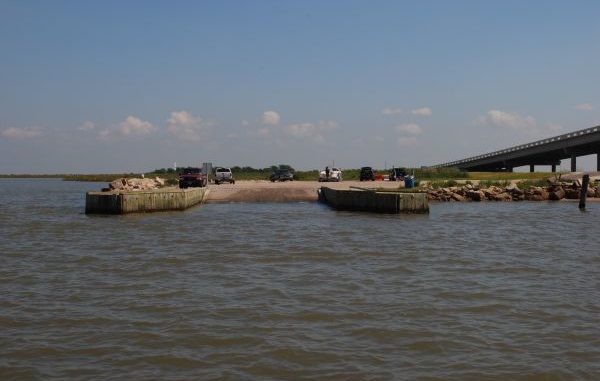
Although half the lake and most of its best fishing is in Louisiana, access to the lake from the Louisiana side is limited.
One boat ramp is located at the base of the Louisiana Highway 82 bridge (locally called the causeway) where it crosses the lower tip of Sabine Lake into Texas.
It is a bare ramp, with no facilities, although a bait shop is located back up the highway.
Besides driving a vehicle on the beach from Johnson’s Bayou, the only other access point is a ramp in Johnson’s Bayou Landing. Like seemingly everything in this untamed landscape, Johnson’s Bayou has an interesting history.
The community took its name from Daniel Johnson, who moved his family there about 1790. The settlement on the southern edge of No Man’s Land was prosperous mostly, say experts, because while the area was un-policed by either Spanish Mexico or the United States an active trade in human flesh occurred.
The United States outlawed the imports of slaves in 1808, but allowed slavery in the country to remain legal; an open invitation for smuggling.
Even after the United States asserted control over the border region, the community thrived. By 1885, Johnson’s Bayou had a population of 1,200 people and produced 600 bales of cotton annually. While the image of cotton fields in today’s watery marsh is difficult to project, the United States even established a custom house in the settlement in 1839.
Johnson’s Bayou remained remote, however. Only a single shell road along the beach connected it to Cameron, the parish seat. And until the causeway was built around 1960, Johnson’s Bayou had no land connection to Texas.
Then on the night of Oct. 12, 1886, Johnson’s Bayou died. The day began normally enough, with men going to their cotton fields and women doing household chores.
By noon, a moderate wind blew from the southeast. By 4 p.m. bayou waters rose 4 feet in one hour.
At 6 p.m., a gale force wind was blowing. By 9 p.m., 12 feet of hurricane-driven waters swept the ridge clean of everything created by humans.
The storm killed 110 people in Johnson’s Bayou and another 86 at Sabine Pass. The town of Radford was obliterated, never to be rebuilt.
In addition to its human victims, the storm killed 20,000 cattle.
A Galveston newspaper correspondent reported “Tuesday, Johnson’s Bayou was a thriving community with more than one thousand inhabitants.
Today it is a community of beggars — the buzzards are the only feathered fowl in the air.